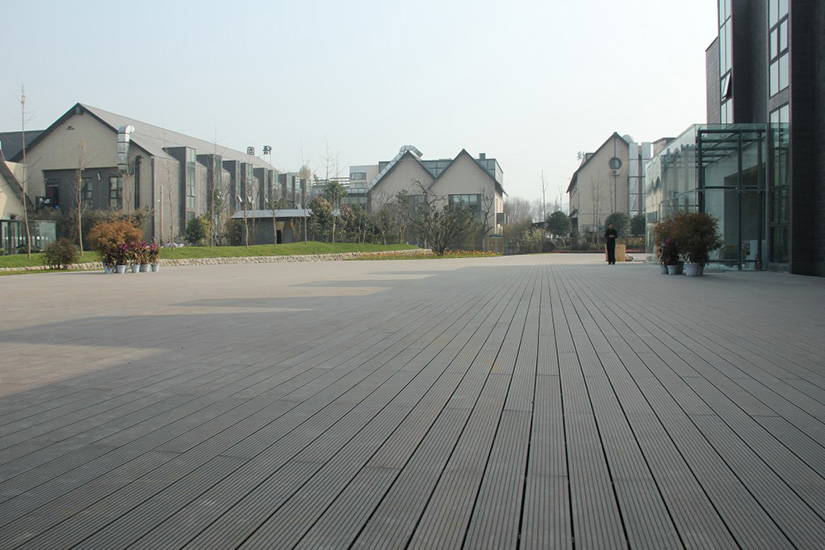
bamboo decking
|
china factory and supplier |

Links: |
The Science Behind Bamboo Decking's Anti-Slip and Anti-Mildew Properties Bamboo decking has gained significant popularity in recent years, not just for its aesthetic appeal but also for its innovative properties that enhance safety and longevity in outdoor spaces. Among these properties, the anti-slip and anti-mildew characteristics stand out as essential features that contribute to the overall functionality of bamboo decking. As a bamboo decking factory technologist, I’ve delved into the science behind these traits, uncovering how bamboo is engineered to withstand environmental challenges while providing a safe and beautiful surface for outdoor living. Understanding Anti-Slip Properties The anti-slip qualities of bamboo decking are largely attributed to its surface texture and design. These properties are crucial, especially in outdoor environments where moisture and foot traffic can create slippery conditions. 1. Surface Texture The surface texture of bamboo decking plays a pivotal role in its slip resistance. Unlike traditional smooth wood surfaces that can become dangerously slippery when wet, bamboo decking often features a textured finish that enhances grip. Natural Grain Patterns: Bamboo’s inherent grain patterns, combined with specific machining techniques, create micro-textures that can significantly improve traction. These patterns help to channel water away from the surface, reducing the likelihood of slips and falls. Finishing Treatments: Many bamboo decking products undergo specialized finishing treatments that enhance their surface texture. These treatments can include sanding or brushing to create a more tactile surface that improves grip underfoot. 2. Material Composition The density and hardness of bamboo also contribute to its slip-resistant properties. High-density bamboo is significantly tougher than many traditional woods, providing a firm and stable surface that helps prevent slipping. This resilience means that even under wet conditions, bamboo decking maintains its integrity and traction. The Science Behind Anti-Mildew Properties Mildew and mold are common challenges in outdoor environments, particularly in areas with high humidity or consistent moisture. Bamboo decking’s resistance to mildew is a result of both its natural properties and the treatments it undergoes during manufacturing. 1. Natural Resistance Bamboo has innate properties that make it less susceptible to mildew compared to conventional woods: Low Moisture Absorption: Bamboo’s structure allows it to absorb less moisture than many traditional wood species. This reduced moisture absorption limits the conditions that foster mildew growth. Chemical Composition: The natural composition of bamboo includes certain compounds that can inhibit the growth of mold and mildew. These properties, combined with its low moisture retention, contribute to a healthier outdoor environment. 2. Protective Treatments To further enhance its anti-mildew characteristics, bamboo decking often undergoes protective treatments during the manufacturing process: Thermal Modification: This process involves heating bamboo to high temperatures in a controlled environment. Thermal modification not only increases the density and strength of the bamboo but also reduces its moisture content and alters its chemical structure, making it less hospitable to mildew. Chemical Treatments: Some bamboo decking products are treated with environmentally friendly antifungal agents that provide an additional layer of protection against mildew. These treatments create a barrier that helps prevent spores from taking hold on the surface of the decking. Performance in Various Climates The effectiveness of bamboo decking’s anti-slip and anti-mildew properties is particularly noteworthy across different climates. 1. Humid Climates In humid environments, where moisture levels are high, the anti-mildew properties of bamboo decking shine. The combination of low moisture absorption and protective treatments keeps mildew at bay, making bamboo an ideal choice for coastal or tropical regions. 2. Wet and Rainy Areas For regions that experience significant rainfall, the anti-slip properties of bamboo become crucial. The textured surface helps channel water away, reducing the risk of slips, while the anti-mildew treatments ensure that the decking remains safe and functional even in wet conditions. 3. Dry Climates In dry climates, bamboo’s natural resilience and low moisture retention still present advantages. The anti-slip properties remain effective, as the surface does not become overly dry and splintered, retaining its grip even in the absence of moisture. Maintenance Tips for Longevity While bamboo decking is designed to resist slip and mildew, proper maintenance can extend its lifespan and ensure optimal performance: Regular Cleaning: Keeping the surface clean and free from debris will help maintain its anti-slip properties. A simple wash with mild soap and water can remove dirt and grime, preventing buildup that could contribute to slipping. Inspection: Periodically check for signs of wear or damage. Addressing any issues quickly will help maintain the integrity of the decking and its protective qualities. Reapplication of Protective Coatings: Depending on the product, reapplying protective finishes every few years can help maintain both slip resistance and mildew protection. The Environmental Impact of Bamboo Decking Beyond its performance characteristics, bamboo decking also offers significant environmental benefits that align with modern sustainable building practices. Sustainable Resource: Bamboo is one of the fastest-growing plants on the planet, capable of reaching maturity in just three to five years. This rapid growth makes it a renewable resource, helping to reduce deforestation and promote responsible forestry practices. Carbon Sequestration: Bamboo absorbs large amounts of carbon dioxide from the atmosphere, contributing to a reduction in greenhouse gases. Choosing bamboo decking supports a healthier planet while enhancing outdoor living spaces. Conclusion The science behind bamboo decking's anti-slip and anti-mildew properties showcases the material's innovative design and environmental benefits. With its unique surface texture, natural resistance to moisture, and effective treatments, bamboo decking outdoor bamboo decking provides a reliable and safe option for outdoor spaces. As homeowners seek sustainable, durable, and aesthetically pleasing solutions, bamboo continues to rise as a premier choice in the decking industry. Embracing bamboo not only enhances outdoor environments but also supports a commitment to sustainability and responsible building practices. |